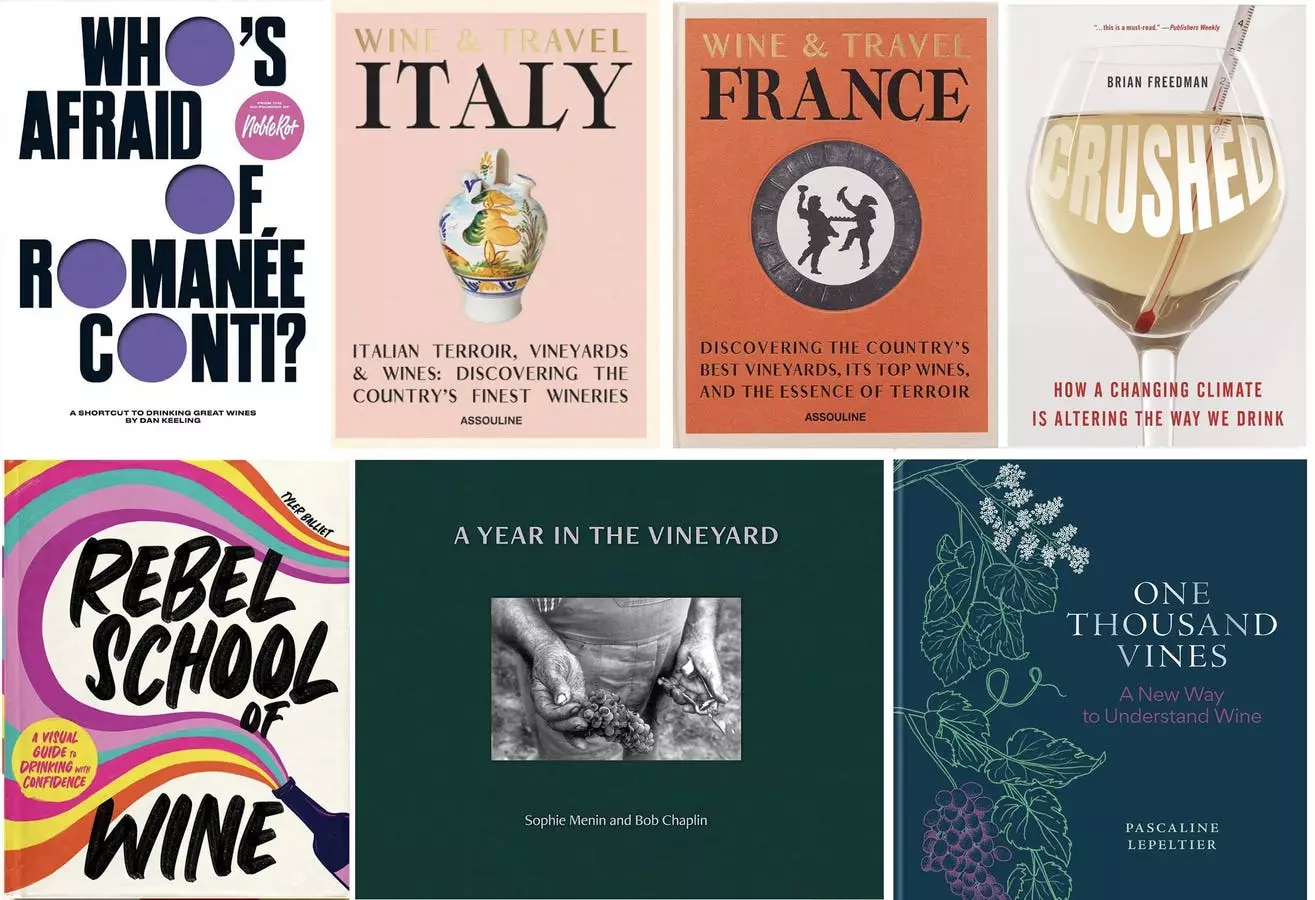The world of wine literature is ever-evolving, reflecting not only the complexities of viticulture but also the diverse cultures and histories intertwined with it. The latest selection of wine books emphasizes not just the drinking of wine but an enriched understanding of its origins, production, and the various factors influencing its future. This article analyzes the noteworthy titles from this year, each contributing to the narrative of the wine experience in its unique way.
One of the standout books of the year is *A Year in the Vineyard* by Sophie Menin and Bob Chaplin, which serves as a sumptuous exploration of the viniculture cycle. With stunning imagery capturing every stage from the awakening of vines after dormancy to their preparation for winter, the book is as much an art piece as it is an informative read. The inclusion of the Japanese proverb, “The footstep of the farmer is the best fertilizer,” gracefully ties the book’s visual narrative to the fundamental truth of agriculture: that the earth thrives under the care of dedicated hands. This thematic depth enriches the reader’s appreciation of both the aesthetic and the laborious aspects of viticulture, inviting a moment of reflection on the relationship between humans and the land.
Moving beyond familiar landscapes, the authors venture into less conventional settings like the dramatic volcanic soils of Lanzarote and the unique basket vines of Santorini. This meticulous attention to geographical diversity serves not just as a feast for the eyes but also as an important reminder of the global challenges we face in the context of climate change—a thread that runs through several contemporary wine discussions.
Assouline’s *Wine & Travel France* and *Wine & Travel Italy* capture the symbiotic relationship between wine and cultural identity within these nations. Written by Enrico Bernardo, a renowned sommelier and restaurateur, these books provide an engaging narrative that intertwines food, family, and scenic beauty. Each title invites readers to savor not just the wine, but the entire lifestyle that surrounds it. The blend of personal anecdotes and a glossary of wine terminologies empowers even novices to delve into the expansive world of wine with confidence.
The immersive quality of these books transcends mere guidebooks; they act as portals to explore the beloved traditions and lifestyles that shaped French and Italian cuisine. The vivid accounts of pastoral landscapes, traditional meals, and family gatherings encapsulate an ethos that elevates the drinking experience to one of community and celebration.
In *One Thousand Vines: A New Way to Understand Wine*, Pascaline Lepeltier presents a structured approach to the intricacies of wine through the lens of French viticulture. While the book is undoubtedly an educational text, Lepeltier’s artistic visual appeal, underlined by Loan Nguyen Thanh Lan’s illustrations, provides an inviting panache that bridges the divide between scholarly and casual. The organization into logical categories like viticulture basics and the cultural significance of wine helps demystify what can often be an overly complex subject.
Lepeltier’s commentary on wine as a reflection of societal values underscores a broader philosophical dialogue about the nature of consumption, urging readers to think critically about what they choose to drink and why. This becomes especially relevant in a modern landscape increasingly marked by commodification and superficial trends.
Conversely, Dan Keeling’s *Who’s Afraid of Romanée-Conti?* is a refreshing take that embraces a more casual, relatable perspective on wine appreciation. This irreverent narrative appeals to both newcomers and seasoned enthusiasts, presenting wine as an accessible pleasure rather than an elite indulgence. Keeling celebrates the hidden gems of the wine world and encourages exploration beyond traditional boundaries, emphasizing that great wines exist at various price points and are often overlooked.
Similarly, *Rebel School of Wine* caters to the millennial audience, offering a visually engaging guide aimed at those new to wine. Its approachable format and vibrant design make it an exciting resource for young drinkers eager to develop their palates. The book shines in its ability to blend education with enjoyment, meeting the needs of a generation that values both information and experience in equal measure.
Lastly, *Crushed: How a Changing Climate is Altering the Way We Drink* by Brian Freedman addresses the pressing issue of climate change in the context of wine production. This journalistic take highlights the urgent transformations happening in the industry, showcasing both promising developments—like the emergence of quality English sparkling wines—and chilling realities of climate-related disasters that threaten vineyards globally. Freedman’s journey underscores that the conversations about wine cannot be separated from the environmental crises we face, making it a crucial read not just for wine enthusiasts but for anyone concerned about the future of our planet.
Overall, this year’s notable wine literature enriches our understanding of a complex and multifaceted topic. As the world changes, so too does our relationship with wine, evolving to encompass our cultural practices, agricultural challenges, and personal experiences. Through these books, readers are invited to both savor and reflect, deepening their connection to one of humanity’s oldest beverages.


Leave a Reply